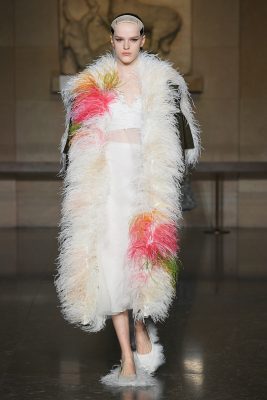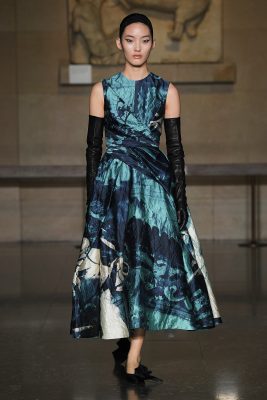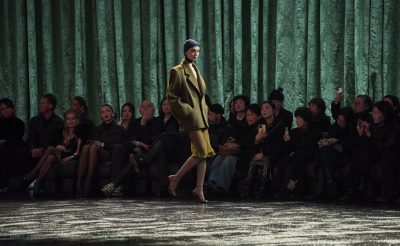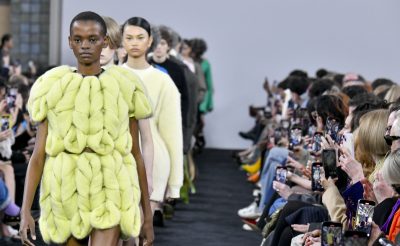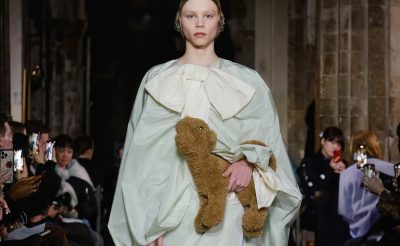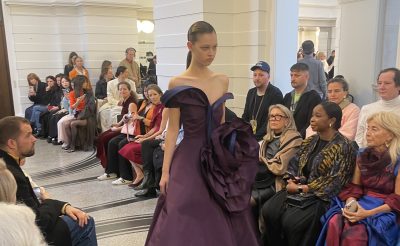On a cloud-veiled Saturday afternoon, the forecourt of the British Museum thrummed with the usual coterie of tourists. Nearby, at a less conspicuous entrance, another gathering of people (namely Erdem’s guests waiting to enter the show space) made for a charmingly incongruous spectacle as casual onlookers saw a confusingly chic assembly amid the usual tourist crowd.
A few minutes past the showtime, an unassuming side portal led attendees into a gallery where the Parthenon sculptures—acquired under contentious circumstances by Thomas Bruce, the 7th Earl of Elgin in the 19th century—served as the setting to recount the story of Erdem Moralioglu’s muse for Autumn Winter 2024: Greek-American soprano legend, Maria Callas.
Aligning with the centennial celebration of her birth, the designer chose the Parthenon setting as nod to her Greek heritage. He was particularly enthralled by Callas’s iconic 1953 portrayal in ‘Medea’, a role that blurred the lines between the artist and her artifice, weaving the threads of myth into the fabric of reality.
From Guinevere van Seenus’ opening pistachio green opera coat look and rose-printed cocoon jackets to operatic capes, Grecian draping, and crushed metallised taffeta dresses, each piece whispered tales of Callas’s life on and off the stage.
For instance, taffeta dresses featured prints inspired by mid-century Salvatore Fiume set designs, while marabou feathers adorned outerwear, heels, and heavy knit sets captured the essence of Callas’s most glamorous moments. Other times, silk pyjama sets and the beauty look, reminiscent of having just removed a wig after a show, evoked the diva’s off-stage life.
Backstage, Moralioglu spoke about the hand-painted brush strokes on the silhouettes of three flower print dresses, inspired by the costumes of Callas in Medea, also designed by Fumi. He liked “the idea of making something quite perfect in the studio and painting over it, ruining but making something quite beautiful.”
Perhaps a metaphor for Callas’s life—leaving a brilliant singing career for a tumultuous romance with Aristotle Onassis. “She fell in love and walked away from her career. It ends in great tragedy; she dies as a recluse in Paris,” he reflected.
But Moralioglu found a deeper connection in Callas’s nomadic life. “Something was interesting in this parallel of Callas’ being born in New York and brought back to Athens; and thent this kind of nomadic life. It was partly controlled by her talents, some of it was in her power and a lot of it was not,” he said.
The show’s finale, was dramatic as Callas’s life. It featured soprano Nadine Benjamin performing to music composed by James Righton, Erdem’s longtime collaborator (and Keira Knightley’s husband).
Morialoglu also mentioned he was deeply touched by a photo of Calas’s ashes wrapped in the Greek flag, ready to be laid to rest in Greece. It was a heartfelt tribute to a great Greek figure brought back to her homeland.








